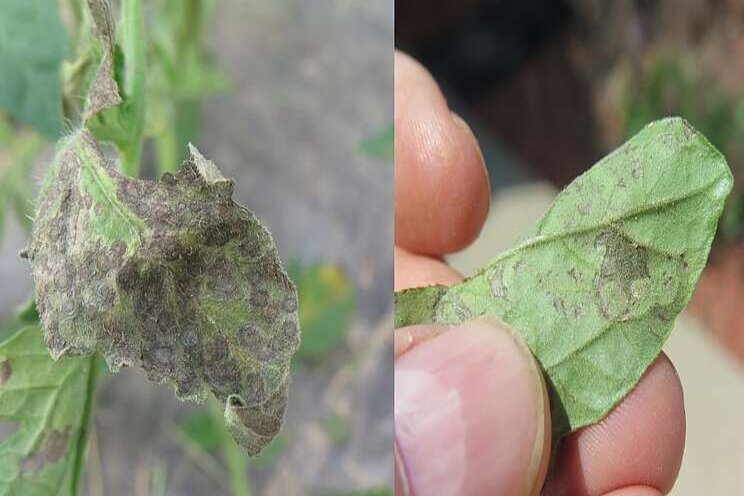Learn better| TSWV in the greenhouse
Added on 21 October 2020

In tomato, small, light-brown flecks first appear on leaves. These spots later turn brown, followed by a general browning of leaves that die and appear drooped on stems, giving the impression they are wilted. Stunting and yellowing of leaves, except the veins, also can be associated with the disease and could be confused with nutritional issues. Green fruit show concentric rings of yellow or brown alternating with the background green color, and striking brown rings occur on red-ripe fruit.
Survival and Spread
In 1919, tomato spotted wilt virus was first described in tomatoes in Australia. Since that time, the disease has spread to many areas of the world. The primary movement of TSWV from one plant to another is by the feeding of thrips. Six species of thrips can transmit TSWV, including Western flower thrips, onion thrips, and tobacco thrips.
When larvae feed on infected tissue for 15 minutes or more, they may acquire the virus. Mature larvae fall to the soil and become pupae that do not feed on the plant. Later, winged adults emerge from the pupae. Thrips can only transmit the virus if it is acquired during their larval stages, although both larval and adult thrips are able to transmit the virus. Adult thrips may carry the virus for its entire life, but the virus is not passed on to the egg stage. The next generation acquires the virus by feeding on infected plants.
Management Methods
A combination of methods is most effective in managing this disease. Chemical control should be integrated with cultural and other methods to reduce selection pressure for resistance development.
Several resistant cultivars of tomato and a few pepper varieties are commercially available. However, resistance-breaking isolates of TSWV overcoming resistance have been identified.
In the greenhouse, an integrated pest management approach is important. Here are eight practices I recommend:
1. Screening (thrips screen) of intake vents and double entry with positive air pressure — to exclude thrips from entering the house.
2. Sanitation, including clean plants to avoid introducing thrips and/or the virus into the greenhouse.
3. Frequent scouting and use of sticky traps to detect presence of the thrips vector (Western Flower thrips) and/or TSWV-infected plants
4. Rogueing of infected plants on detection.
5. Release of beneficial insects when low levels of thrips are detected to suppress thrips populations and keep them from reaching damaging levels. Several species of predatory mites prey on immature thrips.
6. Avoid broad spectrum insecticides, which can take out beneficials.
7. Use soft insecticides such as azadirachtin, Beauvaria bassiana, chlorfenapyr, oils (paraffinic oil), and soaps (potassium salts of fatty acids) where possible.
8. Spinosad (Entrust)/ spinetoram (Radiant) are some of the best thrips materials, but growers need to take care and rotate between other modes of action to avoid resistance from occurring. There may be other insecticides available. However, growers need to read labels, as many products labeled for open-field use may not be approved for greenhouse use.
Remember, if thrips and TSWV become established in the greenhouse, it is nearly always impossible to spray your way out of the problem.
Photo: Tomato spotted wilt virus (TSWV) causes a ring pattern that can be confused with early blight, gray mold, or other fungal diseases. But the lesions caused by TSWV aren't prominent on the underside of tomato leaves, while fungal pathogen lesions are easily observed on both sides of the leaves. Photo by Daniel Egel
Source: Greenhouse Grower
Source: Greenhouse Grower
More news















